Introduction
Due to their minority status, transgender individuals in the U.S. are often prejudiced and discriminated against because of their gender identity. They also have difficulties accessing multiple human rights, including education, employment, housing, and healthcare (Bradford & Syed, 2019). In contrast to being transgender, most individuals identify as cisgender. The goal of this paper is to compare and contrast the experiences transgender individuals have in the U.S. with those of individuals who are cisgender. By contrasting the experiences of transgender and cisgender individuals, the paper can help promote understanding of the community. The picture aims to help make sense of the current state policy landscape for transgender individuals across the country.
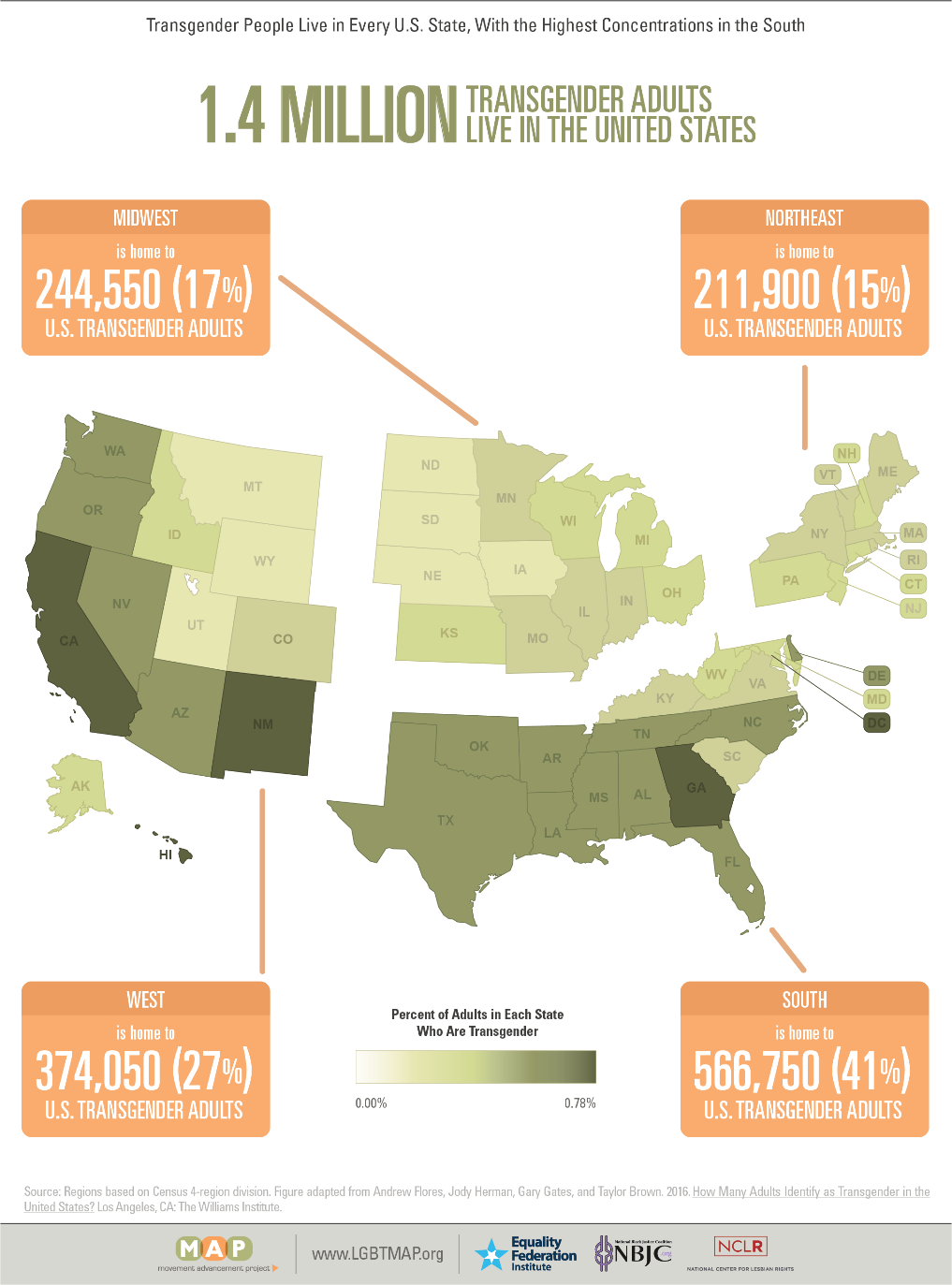
Sociocultural Approach
Contemporary psychology offers a wide variety of approaches, among which the sociocultural approach has been chosen. The sociocultural approach focuses on the role of cultural and social factors in shaping individuals’ behavior. Through this approach, researchers can explore how cultural and social factors affect the development and maintenance of transgender individuals’ behavior (Bradford & Syed, 2019). They can also examine the political and historical contexts affecting their rights and protection. In the U.S., multiple complex social and cultural factors contribute to the transgender population’s marginalization and stigmatization (Peitzmeier et al., 2021). Researchers can use this framework to identify cultural and social change opportunities and reduce stigma.
How Society Influences Their Livelihood
The society’s negative attitudes toward transgender individuals often lead to prejudice and stigma. They often face discrimination in various areas, including employment, education, housing, and healthcare (Peitzmeier et al., 2021). Many states in the U.S. do not have laws against discrimination against transgender people in various areas, such as housing and employment (Peitzmeier et al., 2021). This makes it harder for them to access fundamental human rights. Furthermore, many transgender individuals cannot receive the necessary treatments for their gender identity. For instance, many insurance policies do not cover specific medical procedures, such as gender confirmation surgery and hormone therapy. Figure 2 helps to state further the problems transgender individuals go through in the current society.
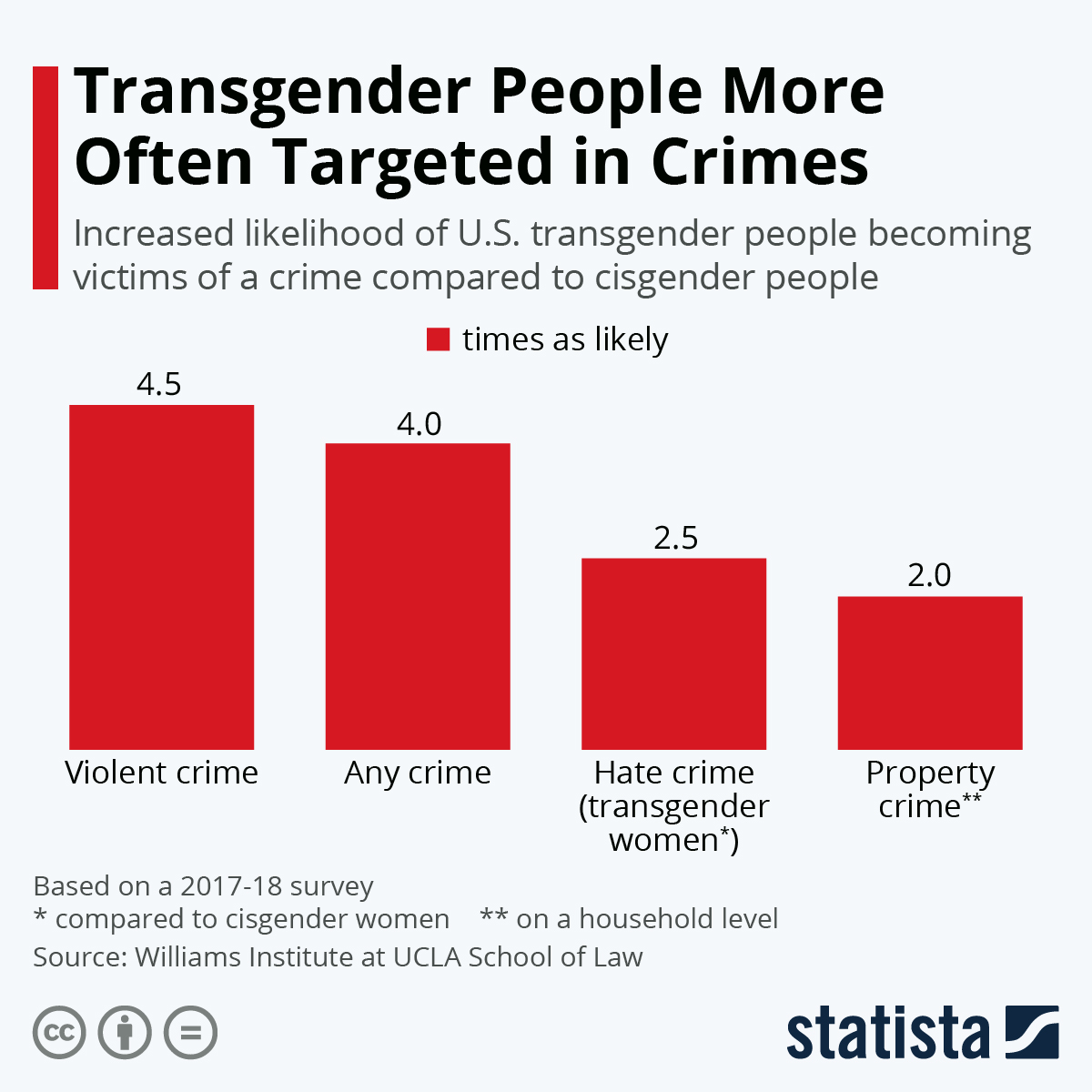
According to Peitzmeier et al. (2021), 48% of transfeminine transgender individuals have experienced some form of abuse or violence due to their gender expression or identity at the hands of their intimate partner. Various forms of violence, such as sexual assault, verbal harassment, and physical assault, are known to occur against transgender individuals. These include attacks while they are using public accommodations and when they are walking in public spaces. They may also be victims of verbal harassment, including hate speech. Being subjected to harassment and violence can harm a transgender individual’s mental health. Figure 3 shows some of the problems or concerns that transgender individuals in various societies face in the health sectors, such as mental health problems.

Stereotypes, Prejudice, and Discrimination
These negative experiences can affect their ability to access certain rights and opportunities. On the other hand, prejudice or misperceptions about transgender individuals are often based on limited or inaccurate information. They can lead to stereotypes such as the idea that individuals are mentally ill or that transitioning is a choice. Gender-affirming medical procedures, such as gender-confirmation surgery and hormone therapy, can be restricted (Holloway et al., 2021). This discrimination can result in adverse health effects and contribute to feelings of marginalization and social exclusion. In Figure 4, stereotypes affect the sources and targets of prejudice. When a source has a stereotype about a target, it can express prejudice, leading to depression. “Deprejudice” refers to prejudice and discrimination occurring in various social and interpersonal settings.

Similarities Between Transgender Individuals and the Majority of People
Like other individuals, transgender individuals have a wide range of interests and experiences. They also share the same struggles as most individuals, such as loss, illness, and personal issues (Holloway et al., 2021). Like other people, transgender individuals have the same basic desires and experiences. Transgender people are similar to the majority of people in terms of their experiences with various aspects of identity. They can also come from different social backgrounds and religious traditions. Like other individuals, transgender people can have various talents and abilities. Picture 5 is important because it shows the percentage of transgender individuals. Despite their gender identity differing from the sex they were assigned at birth, they are humans, like cisgender people.
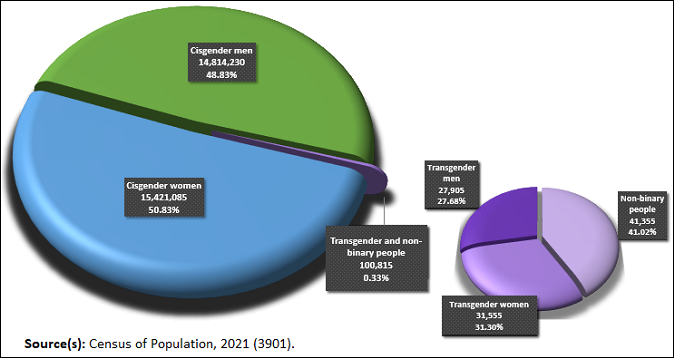
Differences Between Transgender Individuals and the Majority of People
Transgender individuals may experience distress or discomfort due to a mismatch between their biological sex and gender identity. Many transgender individuals face unique challenges when accessing healthcare, especially in procedures such as gender confirmation surgery or hormone therapy (Holloway et al., 2021). Providers lack the necessary training and knowledge to address these issues, which can result in discrimination or inadequate care. They may encounter harassment and discrimination in various aspects of their daily lives, such as employment, education, and housing. They may also feel isolated and lonely due to their rejection by their friends and family.
Impact the Society Has On Transgender Individuals
In social psychology, the concept of social context explains how people’s behaviors and thoughts are influenced by their surroundings. Society can additionally affect the well-being of transgender individuals by contributing to the internalization of specific values and norms related to gender. Hence, they can create a sense of being socialized to conform to a particular gender standard. This can create adverse mental health effects, such as depression and anxiety. This can be exacerbated by the societal belief that transgender individuals are mentally ill or deviant. Holloway et al. (2021) revealed that social support could help protect transgender individuals from the adverse effects of stigma and discrimination. Figure 6 shows how Americans oppose anti-transgender laws, meaning that society can decide to remove the negative impacts transgender people face.
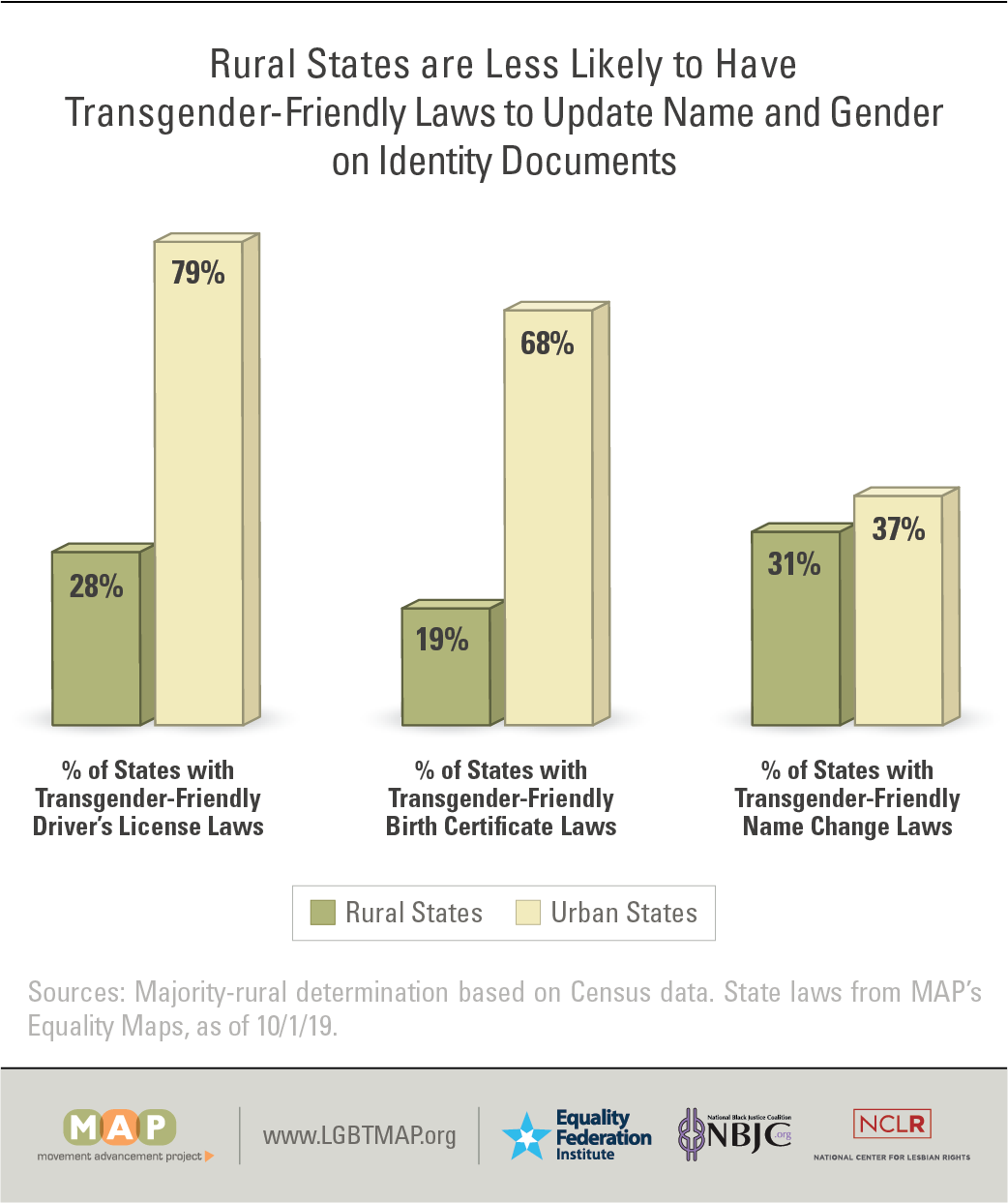
Relations Improving Between the Society and Transgender Individuals
Unfortunately, progress has been uneven and slow; the full acceptance of transgender people in society is still far off. Due to the progress that transgender people have made in legally recognizing their rights, many countries have started to protect them from discrimination. Subsequently, these developments can help decrease the stigma and discrimination they face. Picture 7 shows the way in which the transgender community is integrated into society, which can be used to predict that their relations have been improving.
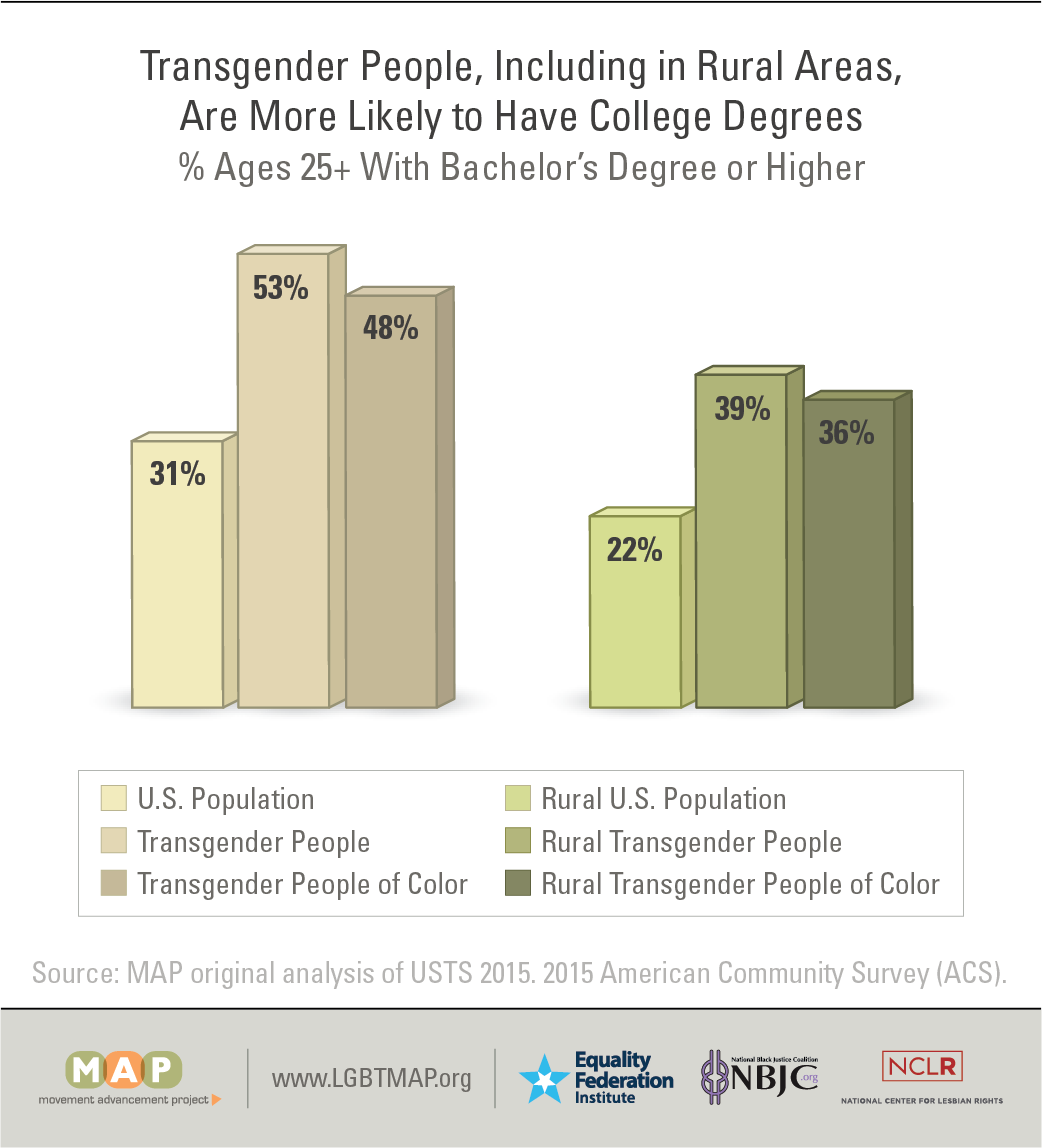
Actions the Society Can Take to Improve Relations
Education can be done through various forms, such as campaigns in schools and communities. Besides being able to educate individuals about what it is like to be transgender, education also involves addressing the various challenges that transgender individuals face. One of the most effective ways to promote transgender education is through school campaigns (Mangin, 2022). These can include events such as awareness weeks and workshops designed to help students understand the various aspects of being transgender. In addition, workplaces can support transgender individuals by providing them with resources such as healthcare coverage and gender-neutral restrooms.
Providing Legal Protection and Promoting Access to Healthcare
Legal protections for transgender people can be implemented in various areas, such as healthcare and employment. For instance, in the U.S., the employment non-discrimination statute known as the ENDA prevents employers from discriminating against employees based on their sexual orientation or gender identity (Alteri, 2022). Several cities and states have enacted non-discrimination laws that cover transgender individuals. Getting proper healthcare is vital in helping transgender individuals improve their well-being. Picture 8 shows essential questions that can be used to improve or provide more protection to this minority, such as the question on federal policies.
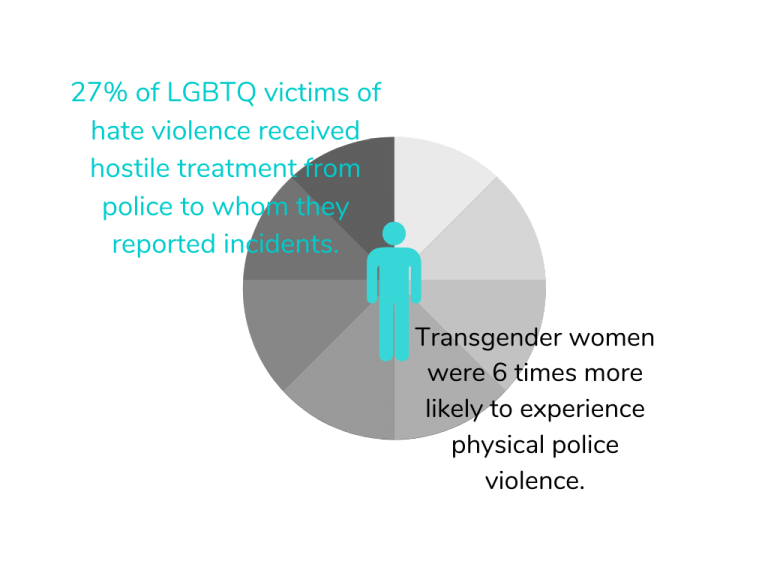
Providing Employment Opportunities
Unfortunately, many transgender individuals cannot maintain employment due to various factors, such as discrimination and lack of legal protections (Alteri, 2022). Additionally, creating an inclusive environment for transgender individuals is one of the most effective ways to improve their employment opportunities. It can be done by establishing policies and procedures that include all employees and through employee resource groups and mentorship programs. Figure 9 conveys that minority groups should be given employment based on their qualifications.
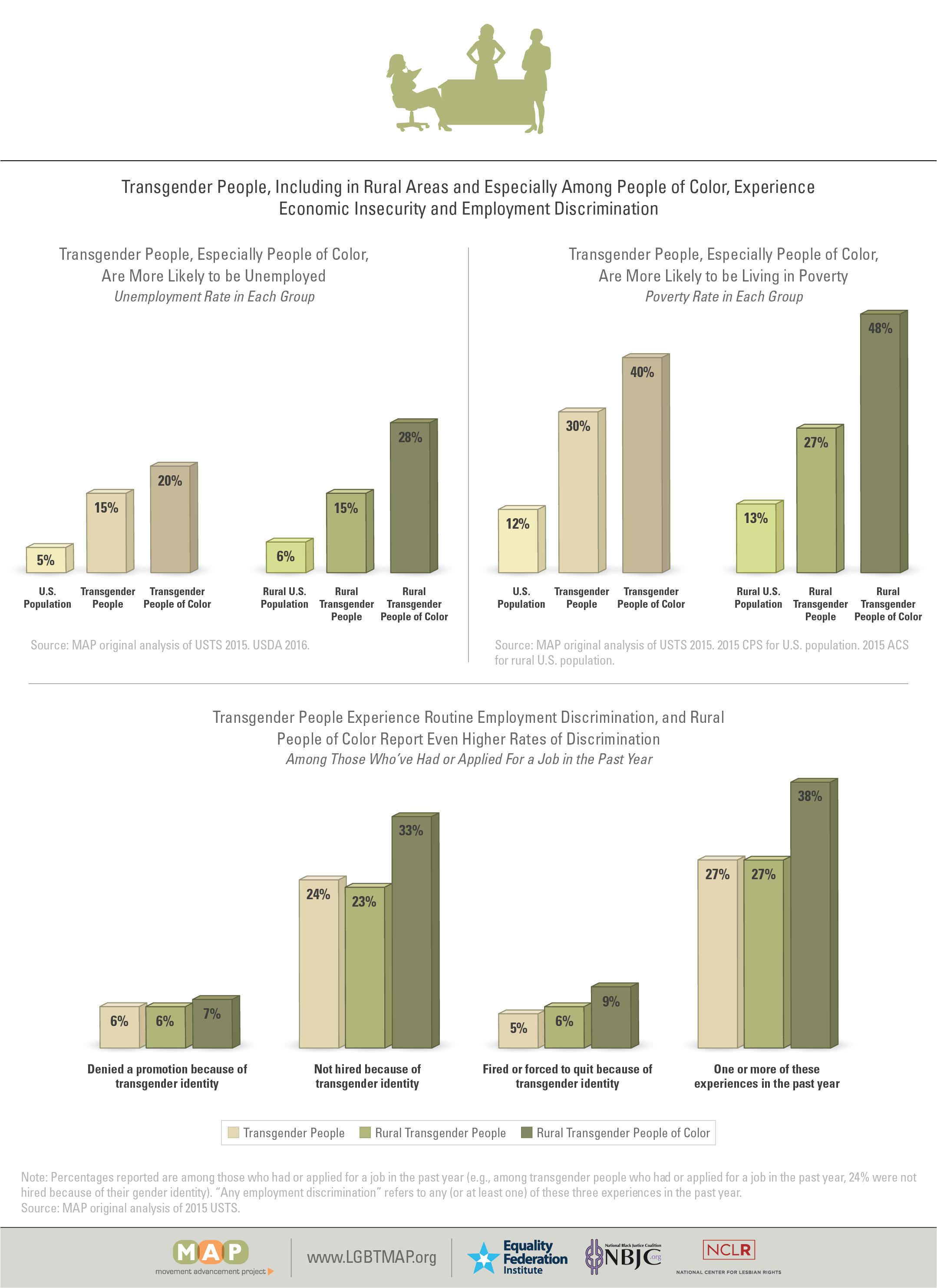
Define Social Psychology
The field of social psychology studies how individuals act in social situations. It also examines the effects of various social factors on mental processes and behavior. A social psychologist is focused on understanding how people behave and make decisions in social situations. They investigate social perception, group dynamics, interpersonal attraction, social influence, and discrimination. Social psychologists can develop theories about how people behave in social situations through various methods, such as surveys, field studies, and experiments.
Social Psychology as Related to the Subject Matter
The field of social psychology is very relevant to the transgender community. It studies how cultural and social factors affect individuals’ perceptions and behaviors. It also helps identify the factors that contribute to the stigmatization and marginalization of transgender people. It explores how social norms, power relations, and group dynamics affect transgender individuals’ societal experiences. Nonetheless, through social psychology, one can develop effective interventions that help improve the relations between people of the transgender community and the majority. It also offers a framework that can help prevent discrimination.
How Can Relations Improve?
There are several ways to improve relations between transgender individuals and the majority group. The main one is through education and awareness. Educating most people about transgender issues can help decrease discrimination and prejudice against them. In addition to educating people about transgender issues, adopting inclusive practices such as dress codes and gender-neutral bathrooms can also help create a more welcoming environment for them (Alteri, 2022). Nonetheless, having supportive networks can help decrease isolation and provide transgender individuals with a sense of community.
Conclusion
In conclusion, transgender individuals in the U.S. are often subject to discrimination and harassment. Factors such as prejudice and stereotyping shape their experiences. Despite the various challenges transgender individuals face, they are still similar to the majority regarding their shared experiences. From a social psychology viewpoint, society can significantly impact how transgender individuals experience their world. Various factors can lead to discrimination and stigmatization against transgender individuals. However, positive attitudes can help promote acceptance and inclusion.
Nonetheless, multiple efforts are being made to improve the relationship between transgender individuals and the majority. These include providing them with legal protections and creating inclusive employment opportunities. Society can also help reduce the stigmatization and discrimination against transgender individuals by adopting policies to make the environment more welcoming.
References
Alteri, A. M. (2022). When rights collide: Examining conflicts between gender identity, sexual orientation, & religious discrimination protections. International Journal of Discrimination and the Law, 22(2), 152–171. Web.
Bradford, N. J., & Syed, M. (2019). Transnormativity and transgender identity development: A master narrative approach. Sex Roles, 81(5–6), 306–325. Web.
Brown, A. (2022). Deep partisan divide on whether greater acceptance of transgender people is good for society. Pew Research Center. Web.
Buchnolz, K. (2022). Transgender People More Often Targeted in Crimes. Statista. Web.
Cottais, C., Lefebvre, V., & Pavard, M. (2021). The perception of transgender people in the world. GROW. Web.
Data on Transgender Youth. (2022). The Trevor Project. Web.
Drew, C. (2023). 15 Social Psychology Examples. Helpful Professor. Web.
Holloway, I. W., Green, D., Pickering, C., Wu, E., Tzen, M., Goldbach, J. T., & Castro, C. A. (2021). Mental health and health risk behaviors of active duty sexual minority and transgender service members in the United States military. LGBT Health, 8(2), 152–161. Web.
Mangin, M. M. (2022). Teachers’ strategies for supporting transgender and/or gender-expansive elementary school students. Educational Researcher, 51(5), 324–335. Web.
“One in 300 people in Canada aged 15 and older are transgender or non-binary”. (2021). Statistics Canada. Web.
Peitzmeier, S. M., Wirtz, A. L., Humes, E., Hughto, J. M., Cooney, E., & Reisner, S. L. (2021). The transgender-specific intimate partner violence scale for research and practice: Validation in a sample of transgender women. Social Science & Medicine, 291, 114495. Web.
Sequeira, G. M., & Dayton, K. (2021). Transgender and Gender-Diverse Youth. JAMA Pediatrics, 175(7), 756. Web.
Socio-cultural psychology. (n.d.). Psychology: what eyes can’t see, lies within the mind. Web.
Suppes, A., Napier, J. L., & van der Toorn, J. (2019). The palliative effects of system justification on the health and happiness of lesbian, gay, bisexual, and transgender individuals. Personality and Social Psychology Bulletin, 45(3), 372-388. Web.
TRANSitions. (n.d.). Black & Pink. Web.
Where we call home: Transgender people in rural America infographics. (n.d.). Movement Advancement Project (MAP). Web.
Zhou, J., Feng, L., Hu, C., Pao, C., Xiao, L., & Wang, G. (2019). Associations among depressive symptoms, childhood abuse, neuroticism, social support, and coping style in the population covering general adults, depressed patients, bipolar disorder patients, and high risk population for depression. Frontiers in Psychology, 10. Web.